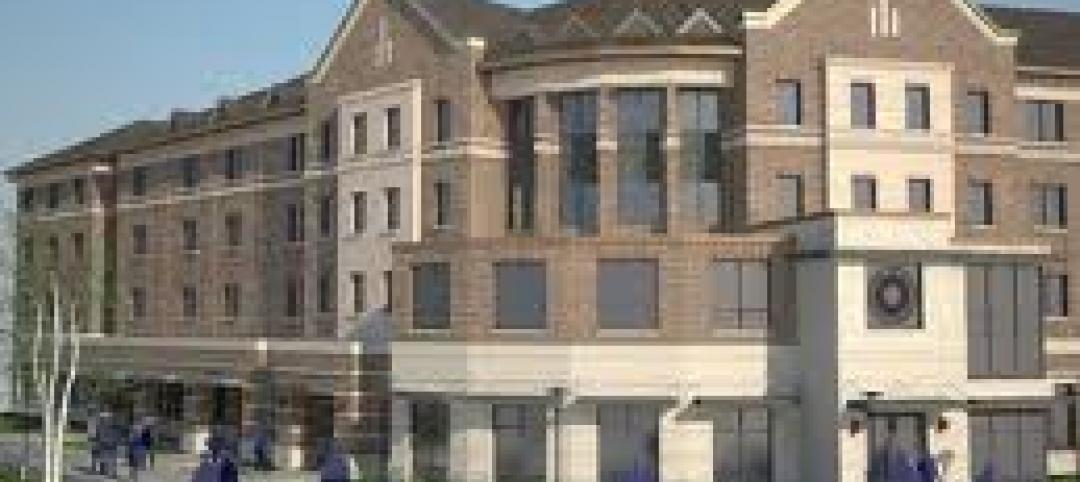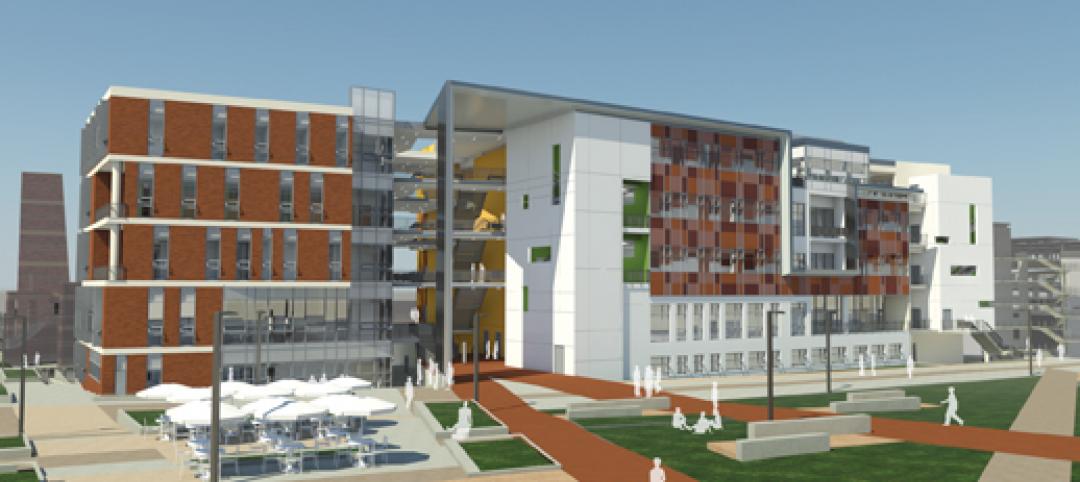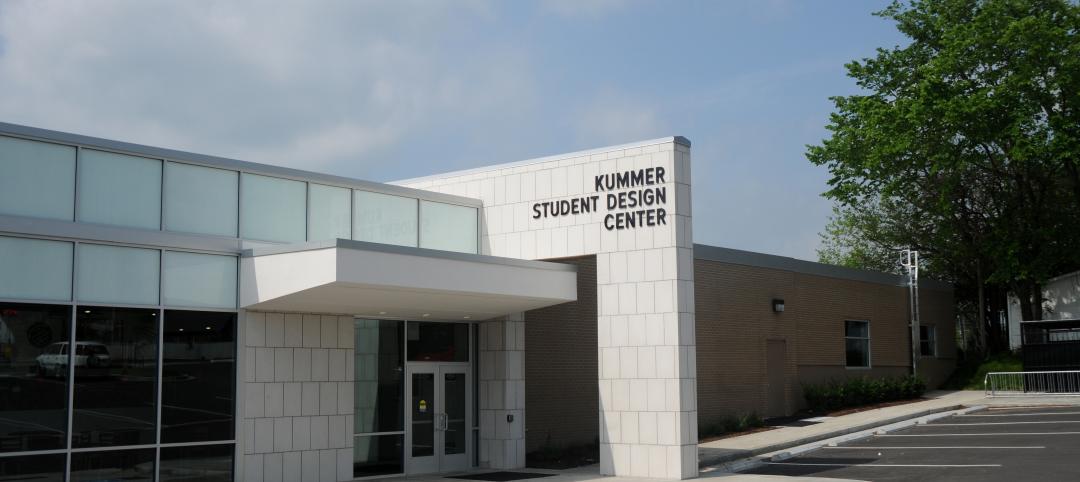Over a five-day stretch last December, students at the Carroll School in Lincoln, Mass., witnessed the installation of a modular classroom building like no other.
The new 950-sf structure, which will serve as the school's tutoring offices for the next few years, is loaded with sustainable features like sun-tunnel skylights, doubled-insulated low-e glazing, a cool roof, light shelves, bamboo trim, low-VOC materials, daylight and occupancy sensors, and a quiet, high-efficiency ventilation system.
The relocatable classroom, named SmartSpace by its creators, is one of a number of high-performance modular classrooms to emerge on the market during the last few years, and it's the first LEED-level unit to be installed in the U.S.
“With SmartSpace, we wanted to rethink typical modular design and construction approaches for classroom buildings,” says Mark N. Dolny, AIA, senior associate with ARC/Architectural Resources Cambridge, which teamed with modular manufacturer NRB Inc., Ephrata, Pa., and Littleton, Mass.-based modular leasing company Triumph Leasing Corp. to develop the SmartSpace design.
Dolny says simple additions like a double-door entry vestibule and expansive exterior glazing (6x16 feet) go a long way toward reducing energy consumption and improving the interior classroom environment.
“Most modular classrooms don't have vestibules, so conditioned air instantly leaks out when people come and go,” says Dolny. A recent energy study of SmartSpace conducted by The Hickory Consortium, Harvard, Mass., confirms the team's theory on the importance of vestibules: “It was one of the biggest factors in the energy study,” says Dolny, adding that the unit beat Massachusetts state energy code by 56% during testing.
The SmartSpace team was careful to keep the concept “realistic and reasonable” as it pertains to first cost, shipping logistics, and constructability, according to Philip L. Laird, AIA, principal with ARC, who collaborated on the design.
“We wanted to make sure this was a doable project and not just a pretty poster that got stuck in a drawer somewhere,” says Laird. “The solution had to be something that NRB could easily build in its shop and ship to the site.”
To that point, the design team worked closely with NRB and Triumph to stay within the size constraints and material specifications for a typical modular classroom. Common materials such as corrugated steel siding, medium-density fiberboard walls, and TPO roofing were specified over more complicated, labor-intensive solutions, like vegetated roofing. Also, dimensions were limited to 25 feet wide, 38 feet long, and 15 feet high to ease shipping to the site and installation. The building is shipped in two pieces. Once connected, the structure is strong enough to permit relocation of the classroom in one piece.
The team also excluded exotic technologies like solar and wind power for fear that school districts would balk at the higher first cost.
“We played with the idea of taking the building completely off the grid with photovoltaics, but PVs are still an expensive technology,” says Dolny. The fact that many modular classrooms are leased works against solar and wind power, he says. “If school districts are leasing, they don't have a 20-year payback to work with, and they can't get tax credits or grants to help pay for the systems.”
Project FROG makes leaps in California
In California, another high-performance modular classroom venture, Project FROG (BD+C May 2006, p. 9), is making inroads of its own.
The company is working on its first installation, a 9,500-sf child development center at the City College of San Francisco, to be completed this summer. The development will incorporate 10 of the firm's Dragonfly and Turtle “green” modular units interconnected to form a campus with classrooms, work areas, office space, reading rooms, a preschool, and motor skills areas for both preschoolers and toddlers.
Project FROG spokesperson Nikki Tankursley says the company is in talks with several other colleges about building similar child development centers. “We've also gotten calls from major Silicon Valley corporations looking to build child development centers for their employees,” says Tankursley. “I think we're on to a nice market here.”
In addition, the company received news late last month that its modular units are now “pre-check” approved by the Division of the State Architect. That means that school districts and community colleges that wish to install Project FROG modules will get expedited permitting and approvals from the DSA.
“Having DSA PC approval tells administrators these buildings meet tough structural, life safety, and environmental standards,” said Leela Gill, COO with Project FROG, a collaboration between San Francisco-based design firm MKThink and B&H Engineering, a San Carlos, Calif.-based manufacturing firm.
The company's modular units, which range in size from 1,000 sf to 1,700 sf, also meet the high-performance school requirements of California's Collaborative for High Performance Schools program, exceed the state's Title 24 energy requirements, and are LEED certifiable. Green features include abundant daylight (up to 800 sf of glass in a single module), T5 or T8 high-efficiency fluorescent lighting, occupancy and daylight sensors, recycled acoustical ceiling tiles with a minimum NRC of 0.60, no-VOC carpet, and recycled rubber flooring.
Related Stories
| Oct 14, 2011
University of New Mexico Science & Math Learning Center attains LEED for Schools Gold
Van H. Gilbert architects enhances sustainability credentials.
| Sep 29, 2011
Busch Engineering, Science and Technology Residence Hall opens to Rutgers students
With a total development cost of $57 million, B.E.S.T. is the first on-campus residence hall constructed by Rutgers since 1994.
| Sep 14, 2011
Research shows large gap in safety focus
82% of public, private and 2-year specialized colleges and universities believe they are not very effective at managing safe and secure openings or identities.
| Sep 12, 2011
LACCD’s $6 billion BIM connection
The Los Angeles Community College District requires every design-build team in its massive modernization program to use BIM, but what they do with their 3D data after construction is completed may be the most important change to business as usual.
| Sep 12, 2011
Living Buildings: Are AEC Firms up to the Challenge?
Modular Architecture > You’ve done a LEED Gold or two, maybe even a LEED Platinum. But are you and your firm ready to take on the Living Building Challenge? Think twice before you say yes.
| May 18, 2011
Major Trends in University Residence Halls
They’re not ‘dorms’ anymore. Today’s collegiate housing facilities are lively, state-of-the-art, and green—and a growing sector for Building Teams to explore.
| May 18, 2011
Raphael Viñoly’s serpentine-shaped building snakes up San Francisco hillside
The hillside location for the Ray and Dagmar Dolby Regeneration Medicine building at the University of California, San Francisco, presented a challenge to the Building Team of Raphael Viñoly, SmithGroup, DPR Construction, and Forell/Elsesser Engineers. The 660-foot-long serpentine-shaped building sits on a structural framework 40 to 70 feet off the ground to accommodate the hillside’s steep 60-degree slope.
| Apr 13, 2011
Duke University parking garage driven to LEED certification
People parking their cars inside the new Research Drive garage at Duke University are making history—they’re utilizing the country’s first freestanding LEED-certified parking structure.















